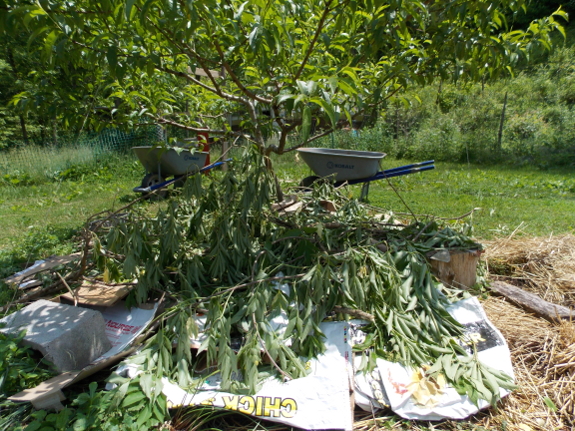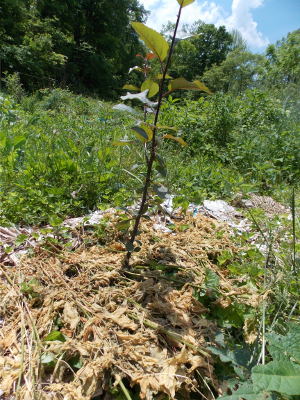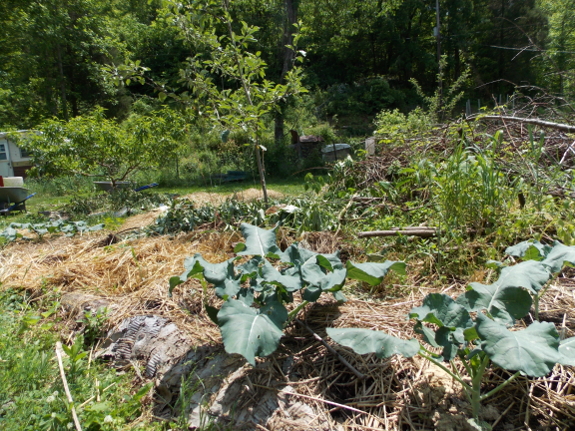
Mulching with coppiced elderberries

 This is the time of year when
the weeding starts to get ahead of me and I have to cut corners.
For example, a couple of spots in the forest garden had turned into
such weed pits that I figured the understory plants were detrimental to
the trees above. Without an hour per tree to root out each weed,
I hunted down cardboard and paper feed bags to lay down a
quick-and-dirty kill mulch instead. But what organic matter could
I put on top to weigh the kill mulch down and give it some longevity?
This is the time of year when
the weeding starts to get ahead of me and I have to cut corners.
For example, a couple of spots in the forest garden had turned into
such weed pits that I figured the understory plants were detrimental to
the trees above. Without an hour per tree to root out each weed,
I hunted down cardboard and paper feed bags to lay down a
quick-and-dirty kill mulch instead. But what organic matter could
I put on top to weigh the kill mulch down and give it some longevity?
Our core homestead was
entirely wooded when we got here, and many stumps are still sprouting
back from the base annually. At this time of year, new sprouts
are easy to rip loose --- one minute of yanking and I had enough
box-elder branches to mulch the little apple tree to the left.

For the forest garden, I
instead turned to elderberries. It's
actually part of traditional Guatemalan agriculture to allow
elderberries in your fields, then to coppice them regularly to mulch
the plants you care about. Our damp homestead
means elderberries spring up everywhere, and I cut down all of last
year's stems from the patch in front of the barn in just a couple of
minutes. At this time of year, elderberries are easy to snap
across your knee, so the leafy stems are what I ended up topping off my
forest garden kill mulches with. Since I left this year's stems
on the trees, they should have plenty of gumption to keep growing,
allowing me to repeat the easy mulch-gathering next year.
Last
year, I made a similar mulch out of wingstem and ragweed, and the berries mulched
thusly stayed much more weed-free than I would have thought,
considering that leafy stems tend to dessicate down into a very thin
mulch within a few days. I'm hoping my forest-garden quick fix
will have similar results.
Want more in-depth information? Browse through our books.
Or explore more posts by date or by subject.
About us: Anna Hess and Mark Hamilton spent over a decade living self-sufficiently in the mountains of Virginia before moving north to start over from scratch in the foothills of Ohio. They've experimented with permaculture, no-till gardening, trailersteading, home-based microbusinesses and much more, writing about their adventures in both blogs and books.
Want to be notified when new comments are posted on this page? Click on the RSS button after you add a comment to subscribe to the comment feed, or simply check the box beside "email replies to me" while writing your comment.
